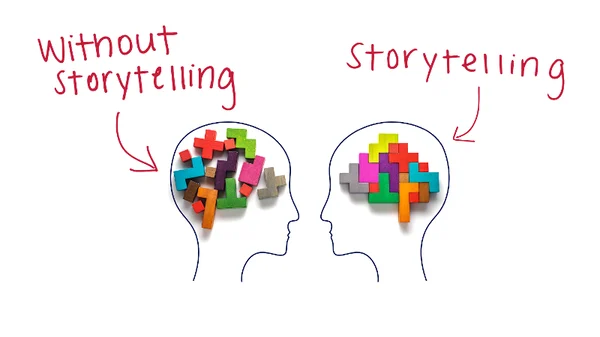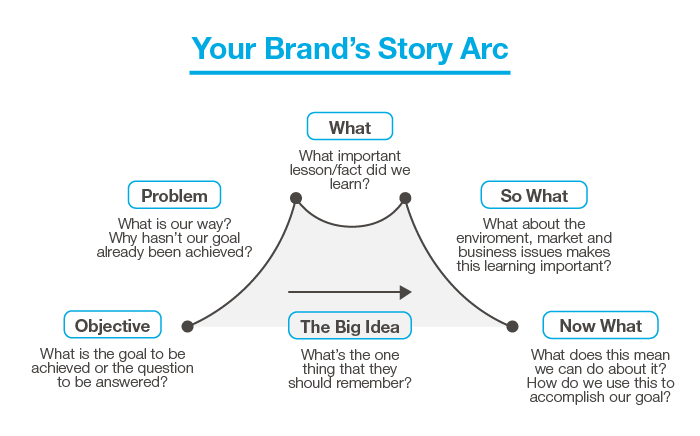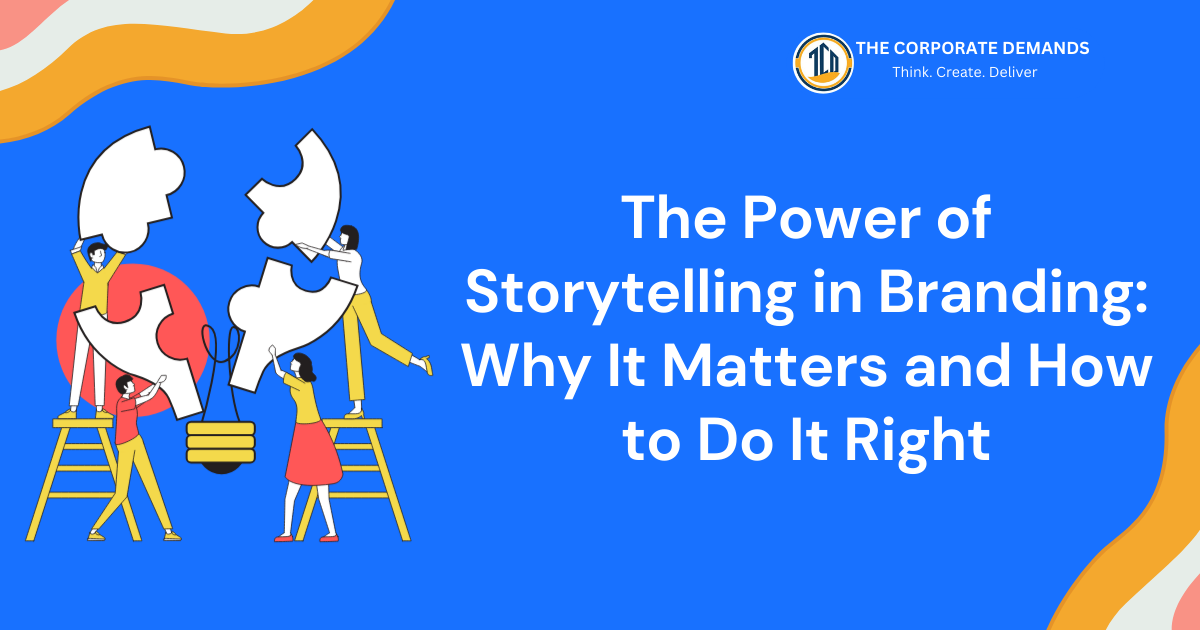In today’s fast-paced digital landscape, consumers are bombarded with countless brand messages daily. To stand out in this crowded marketplace, brands must forge emotional connections with their audience. One of the most effective ways to do this is through storytelling. Let’s explore why storytelling is so powerful in branding and how you can leverage it to create a lasting impact.
Why Storytelling Matters in Branding
- Creates Emotional Connections
- Stories evoke emotions, and emotions drive decisions. A compelling brand story can make your audience feel something, whether it’s joy, nostalgia, inspiration, or empathy. These emotional connections foster loyalty and trust, encouraging consumers to choose your brand over others.
- Differentiates Your Brand
- In a sea of similar products and services, your brand story sets you apart. It highlights what makes your brand unique and why consumers should care. A well-crafted story can turn a generic product into a memorable experience.

- In a sea of similar products and services, your brand story sets you apart. It highlights what makes your brand unique and why consumers should care. A well-crafted story can turn a generic product into a memorable experience.
- Builds Authenticity and Trust
- Authentic stories resonate with audiences. By sharing your brand’s journey, values, and mission, you build transparency and trust. Consumers today value honesty and are more likely to support brands they perceive as genuine and authentic.
- Enhances Recall and Recognition
- People remember stories more than facts and figures. A captivating brand narrative can enhance recall and recognition, making it easier for consumers to remember and identify your brand.
How to Craft an Effective Brand Story
- Know Your Audience
- Understanding your audience is crucial for crafting a story that resonates. Conduct market research to identify your target demographic’s interests, values, and pain points. Tailor your story to address these aspects.
- Define Your Brand’s Core Values
- Your brand story should reflect your core values and mission. What does your brand stand for? What are your guiding principles? Clearly defining these elements will provide a solid foundation for your story.
- Highlight the Journey
- Every great story has a beginning, a middle, and an end. Share the journey of your brand: the challenges you’ve faced, the milestones you’ve achieved, and the lessons you’ve learned. This narrative arc makes your story relatable and engaging.
- Be Authentic and Transparent
- Authenticity is key. Avoid exaggerating or fabricating aspects of your story. Consumers appreciate honesty and can quickly spot insincerity. Share real experiences and genuine emotions to build trust and credibility.

- Authenticity is key. Avoid exaggerating or fabricating aspects of your story. Consumers appreciate honesty and can quickly spot insincerity. Share real experiences and genuine emotions to build trust and credibility.
- Incorporate Visual Elements
- Visuals play a crucial role in storytelling. Use images, videos, and graphics to bring your story to life. Visual elements can enhance emotional engagement and make your story more memorable.
- Engage Your Audience
- Encourage your audience to be part of your story. User-generated content, testimonials, and interactive campaigns can make your audience feel involved and valued. Share their stories and experiences to create a sense of community.
- Consistent Messaging Across Channels
- Ensure consistency in your storytelling across all marketing channels. Whether it’s social media, your website, or email campaigns, the core message should remain the same. Consistency reinforces your brand identity and strengthens recognition.
Examples of Successful Brand Storytelling
- Nike: Just Do It
- Nike’s “Just Do It” campaign is a perfect example of powerful storytelling. It’s not just about selling shoes; it’s about celebrating human potential and perseverance. Nike’s stories of athletes overcoming obstacles resonate deeply with their audience.
- Dove: Real Beauty
- Dove’s “Real Beauty” campaign challenged societal norms and promoted self-acceptance. By sharing authentic stories of real women, Dove built a strong emotional connection and positioned itself as a champion of diversity and empowerment.
- Airbnb: Belong Anywhere
- Airbnb’s “Belong Anywhere” campaign tells stories of travellers and hosts around the world. These stories highlight the sense of belonging and community that Airbnb offers, differentiating it from traditional hospitality brands.
Conclusion
Storytelling is a powerful tool in branding. It creates emotional connections, builds authenticity, and differentiates your brand in a competitive market. By crafting a compelling brand story that resonates with your audience, you can enhance recall, foster loyalty, and drive long-term success.

